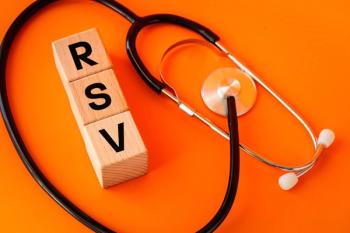
Children Exposed to 9/11 Chemical "Dust" Show Signs of Heart Disease Risk
The study's lead investigator said most of the focus after the World Trade Center attacks has been on mental health, but there were physical effects, too.
Sixteen years after the September 11th attacks that toppled the World Trade Center, researchers report that children exposed to the chemical cloud of debris that rose over Lower Manhattan are showing early signs of risk for future heart disease.
Researchers at NYU Langone Health did blood tests on 308 children, 123 of whom may have come in early contact with the dust the day the towers fell. Those children with higher blood levels of chemicals known to be in the dust field had elevated levels of fats in the blood, the first stage of hardening of the arteries.
The study’s lead investigator, Leonardo Trasande, MD, MPP, an associate professor at NYU School of Medicine, said this is the first time anyone has linked the attacks to long-term cardiovascular risk in the children exposed to the toxic dust. Results were published Thursday in Environment International.
The “children” are now young adults who were registered in the World Trade Center Health Registry, which tracks the physical and mental health of 2900 children who lived or attended school in Lower Manhattan on September 11, 2001.
“Since 9/11, we have focused a lot of attention on the psychological and mental fallout from witnessing the tragedy, but only now are the potential physical consequences of being within the disaster zone itself becoming clear,” Trasande said in a
An analysis by Trasande published in January found the same 123 children identified in the registry appear to have had higher exposure to perfluoroalkyl substances, including perfluorooctanoic acid (PFOA). The chemical, used to make plastic more flexible, was released into the air during the collapse and later shown to have harmful effects on children; US manufacturers stopped using it in 2014. The January study found the blood PFOA levels of the 123 children were much higher than a comparison group of 185 children who were not living or studying in the city on the day of the attacks.
The new study finds that for every 3-fold increase in the blood acid levels, there is a 9% to 15% increase in blood fats, including low-density lipoprotein cholesterol or triglycerides. The good news is that by identifying these risk factors early, they can be treated, Trasande said.
Reference
Koshy TT, Attina TM, Ghassabian A, et al. Serum perfluoroalkyl substances and cardiometabolic consequences in adolescents exposed to the World Trade Center disaster and a matched comparison group [published online September 8, 2017]. Environ Int. 2017;
Newsletter
Stay ahead of policy, cost, and value—subscribe to AJMC for expert insights at the intersection of clinical care and health economics.







































